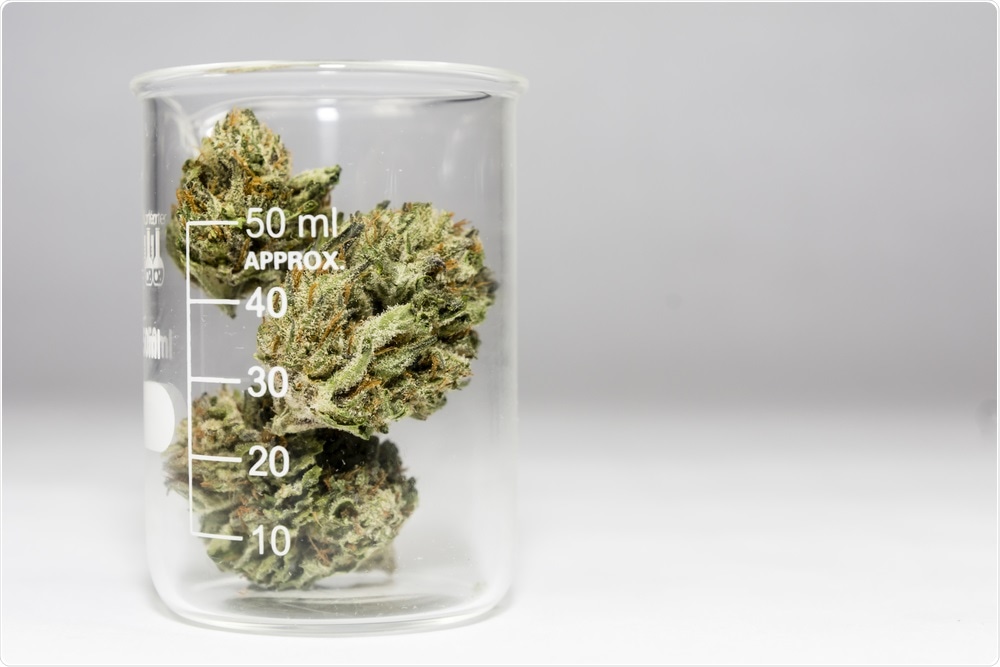As both the medical and commercial availability of Cannabis products continue to rise around the world, it is imperative that the health agencies in these nations periodically perform quality control checks of this plant.
A recent study conducted by researchers at the Suez Canal University in Egypt provided a comprehensive report on the most widely used Cannabis analytical techniques between 2015 and 2018. These techniques ranged from liquid chromatography (LC) and gas chromatography (GC) to near-infrared spectroscopy.
 Mitch M | Shutterstock
Mitch M | Shutterstock
Liquid chromatography techniques
Liquid chromatography is considered to be one of the most important analytical techniques for the determination of cannabinoid concentrations in the cannabis plant. Between 2015 and 2018, several different LC approaches were identified that could accurately quantify the content and determine the stability of cannabinoids.
Liquid chromatography can also be used to compare any variance that may exist between the major cannabinoid compounds, as well as to determine any potential antioxidant activity of the cannabis plant.
One of the most widely referenced liquid chromatography method discussed in the study was high-performance liquid chromatography (HPLC) coupled with a diode-array detector (DAD). For example, in 2016 Mudge et al. utilized HPLC-DAD to perform both a qualitative and quantitative analysis of the major components of cannabis, of which included ∆9-THC, THCA, CBN, CBD, CBDA, and CBGA, along with all phenolic compounds.
In 2018, Labs-Mart further developed and validated this specific chromatography method by coupling it with gas chromatography with mass-spectroscopy (GC-MS). More recently, HPLC-DAD has provided medicinal chemists with a method capable of defining the cannabis chemotypes for eight major cannabinoid compounds.
Gas chromatography techniques
The most widely used gas chromatography techniques for analyzing the concentration and stability of cannabinoid compounds include GC coupled with a flame ionization detector (GC/FID) and GC-MS.
While GC/FID has provided useful information on cannabinoid structure and stability, this technique is limited due to the heat of the gas chromatography port. The presence of heat in this system has been shown to cause decarboxylation of acidic cannabinoids and ultimately neutralize these compounds.
On the other hand, GC-MS has been widely accepted as a valid method for analyzing the cannabinoid content of both hemp and commercial cannabis products. Further enhancement of GC-MS has been achieved for this purpose by coupling this technique to headspace solid-phase microextraction (HS-SPME). GC coupled to HS-SPME has allowed researchers to explore the complete volatile organic compound (VOC) emission rates of 48 different cannabis plants.
Other advanced techniques
Various other advanced analytical techniques have been employed for the analysis of cannabis. For example, a 2018 study utilized near infared spectroscopy to determine the cannabinoid content in Cannabis sativa L.
Thermal desorption-ion mobility spectrometry was also used in 2018 to discriminate between the different chemotypes of Cannabis sativa L., as well as provide quantitative information on its cannabinoid content. Additionally, high-resolution ion mobility spectrometry was used during 2018 to extract, isolate and perform potency testing on various cannabinoids obtained from the cannabis plant.
Which technique is best?
Overall, there are various different analytical approaches that can be used to evaluate the cannabis plant. Since each analytical method is associated with its own set of advantages and limitations, it is imperative for both federal and international organizations to determine which procedures exhibit the highest level of accuracy for future quality control purposes.
Source:
Ibrahim, E. A., Hadad, G. M., Salam, R. A. A., Ibrahim, A. K., et al. (2018). Recent analytical approaches in quality control of Cannabis sativa L. and its preparations. Records of Pharmaceutical and Biomedical Sciences. 10.21608/rpbs.2018.5518.1014.